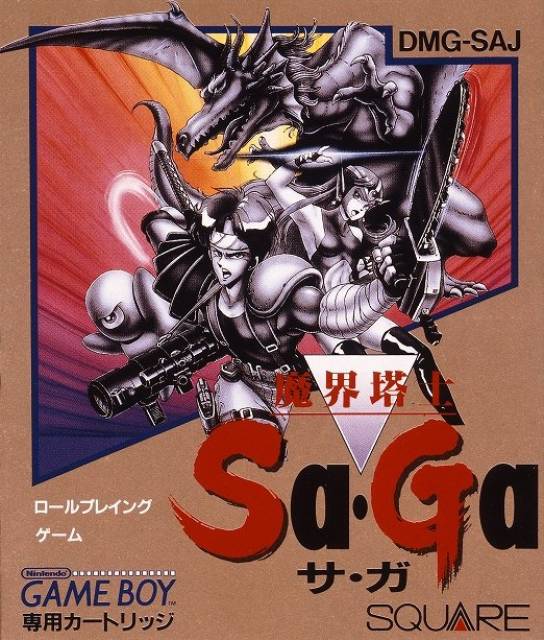Overview
 Japanese box art of the original SaGa.
Japanese box art of the original SaGa.The SaGa series is a long-running RPG series developed by Squaresoft (now Square Enix). Entries in the series have typically defied a number of the conventions of the JRPG subgenre. It was created by Akitoshi Kawazu, who joined Squaresoft in 1985 and worked as a game designer on Final Fantasy and Final Fantasy II. The series began with the original SaGa, released on the Game Boy. In the west, Squaresoft marketed the game under the name The Final Fantasy Legend as a means to draw more interest, though the gameplay is remarkably different from that of the average Final Fantasy title. The Game Boy sequels, SaGa II and SaGa III, were likewise released under the names Final Fantasy Legend II and Final Fantasy Legend III. The first SaGa title to see release in the west under its original name is the PlayStation entry SaGa Frontier.
The SaGa series began as a more traditionally linear RPG series, in which the player controls a single party through the course of the game and engages in events in a predetermined order. Later entries in the series, beginning with Romancing SaGa on the Super Famicom, opened up the gameplay for more non-linear progression. The games traditionally feature multiple protagonists, each with their own intersecting stories that can be played through in any order.
Game Boy Origins
The original SaGa features a gameplay system which allows the player to improve the statistics of the party members through actions taken in battle. For example, attacking with heavy weapons will randomly increase a character's strength statistic. This mechanic is similar in nature to the stat-building system found in Final Fantasy II. Additionally, monster party members can increase in power by consuming the meat of other defeated monsters.
SaGa allows players to form parties from multiple classes including male and female humans, male and female mutants, and a few species of monsters. SaGa also allowed its humanoid party members to equip weapons, items, armor and magic tomes, limited only by the open slots in a given member's inventory. As such, a single character can equip three swords if the player desires it. Weapons are also perishable, with a set number of uses. Natural monster abilities fall prey to this limitation as well; the only way to "recharge" said abilities is to stay and recover at an inn.
SaGa II adds the unique "Robot" class whose stats are completely dependent on what equipment it has equipped. The more powerful the item, the higher the robot's stats, with the exception of magical equipment. In SaGa III, the player's party members can eat monster meat, as in the first two games, and also install machine parts into their bodies. Character classes exist on a scale of Robot to Monster, with Human/Mutant existing as the neutral median. A character that has installed robot parts can revert to human or become a monster by subsequently eating monster meat.
Log in to comment